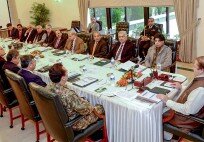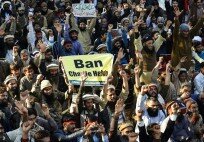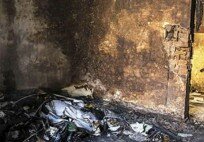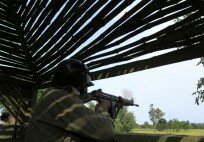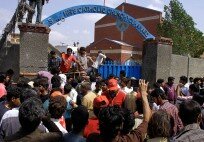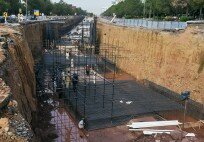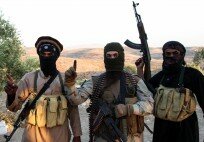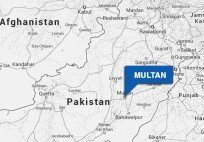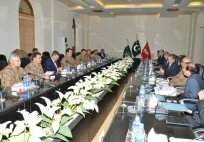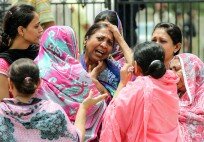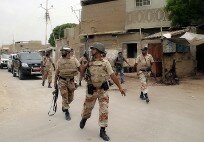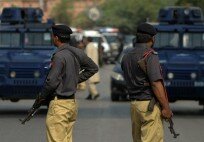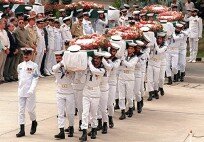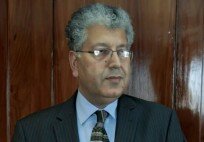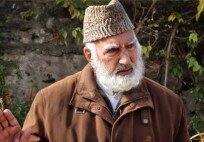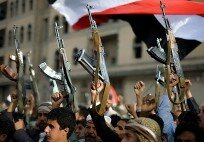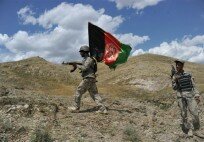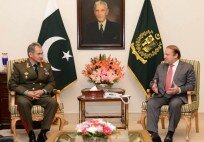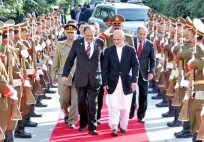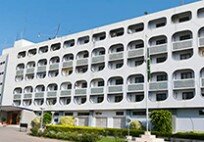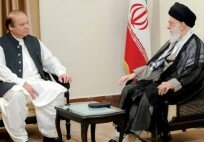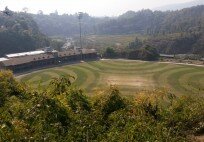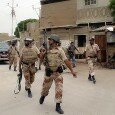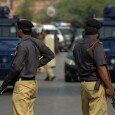By Shaiq Hussain –
Is the brazen militant attack on the PAF Base, Minhas a reaction to the impending military operation in North Waziristan?
Nine militants donning military uniforms and suicide jackets attacked one of the largest Pakistan Air Force bases on August 16 around 2am. In the dark of night, the militants used Rocket Propelled Grenades and automatic weapons as they fought their way into PAF Base, Minhas located at Kamra, which is around 45 miles northwest of Islamabad.
The news of this spectacular terrorist assault on an air base which houses the PAF Aeronautical Complex that includes the Aircraft Rebuild Factory, Mirage Rebuild Factory, Aircraft Manufacturing Factory, Kamra Avionics and Radar Factory and unmanned aerial vehicles was soon all over on Pakistani and international media, leaving the country, particularly, the leadership of armed forces in a state of shock.
The shock-and-awe also had a global dimension as some western media outlets, in the aftermath of Kamra attack, suggested that the base has been most likely used by Pakistan for the storage of some nuclear warheads, a claim promptly refuted as baseless by the country’s security officials, including the Air Force.
After nearly five hours of fierce gunfight, all the nine attackers were killed but in the process two Pakistani soldiers also embraced martyrdom. Moreover, the top air force official in the air base (base commander) was also injured as he led the security forces in battle with the assaulting militants. The intruders were also able to damage a surveillance aircraft ‘SAAB 2000’.
“Before the attack on Kamra air base, reports continued to appear in the western media about Pakistan’s decision to finally accede to the longstanding U.S. demand for a large scale military operation in North Waziristan”
It was not the first terrorist attack on an important installation of the Pakistani armed forces and the way the attack was carried out was a grim reminder of an earlier strike on a naval base in Karachi, PNS Mehran, in May 2011.
Before that the suicide bombers targeted military cantonments and the airbases of the armed forces and in 2009, there was a similar assault on the army’s headquarters in Rawalpindi.
The daring assaults by militants, most of them purportedly linked with the Hakimullah Mehsud-led Tehrik-e-Taliban Pakistan (TTP), on important military installations, including some very well secured ones, have always raised questions as to their motives.
To some, all these assaults are the acts of revenge for different military operations that Pakistan Army has carried out in different tribal regions. Then, there were also counter-terrorism operations in settled areas such as the killing of former Al Qaeda chief Osama bin Laden in Abbottabad on May 2, 2011 in a secret military raid by U.S. Navy SEALS.
 Many in the militant cadres see Pakistan’s hand or connivance with the U.S. in that high profile elimination of the world’s most wanted man. Seen in isolation, the Kamra attack assumes significance in the backdrop of swirling reports about an imminent military operation in North Waziristan.
Many in the militant cadres see Pakistan’s hand or connivance with the U.S. in that high profile elimination of the world’s most wanted man. Seen in isolation, the Kamra attack assumes significance in the backdrop of swirling reports about an imminent military operation in North Waziristan.
Before the attack on Kamra air base, reports continued to appear in the western media about Pakistan’s decision to finally accede to the longstanding U.S. demand for a large scale military operation in North Waziristan, which is allegedly used as a hub by the most powerful Taliban-linked militant outfit, the Haqqani network.
Apart from Haqqani network, TTP is also deeply entrenched in this restive tribal region along with scores of foreign militants of Arab, Central Asian and even some European origin.
The TTP of Hakimullah, which has also claimed responsibility for the Kamra attack, perhaps feels that it would be the prime target of any military offensive in North Waziristan as the Haqqanis and another strong militant group of Hafiz Gul Bahadar, which is also based in North Waziristan, are considered to have made secret peace deals with the Pakistani security forces.
This belief of TTP can’t be rejected as unfounded in totality as owing to involvement of this militant group in most terrorist acts on Pakistani soil, it has now become a major enemy of the Pakistani security forces and if and when an operation is launched in North Waziristan, the army would be inclined to eliminate its hideouts and also to take out its rank and cadres.
In fact, the TTP is already at the receiving end in another tribal area of Orakzai agency, which is known to be Hakimullah’s stronghold and, in addition to the land troops, the Pakistan Army is also using F-16 fighter jets to destroy the militants’ hideouts there — action which has left dozens of terrorists killed and injured.
If the Kamra attack is indeed linked to the impending army operation in North Waziristan, it lends to fears about more acts of subversion across Pakistan in the days to come, before and after the offensive is actually launched.
According to defence officials, all possible measures are being taken to counter possible terrorist assaults in the future. Security officials also cite the example of Kamra as a clear manifestation of their preparedness to thwart such designs.
“It was the preparedness and alacrity of the security forces that helped avert any major disaster in Kamra and the intruding militants were not given time and space to spread and occupy the base for hours, as they had planned, according to preliminary investigation,” a security official said on condition of anonymity.
He said in the wake of Kamra attack, security plans for major army, air force and naval installations have been reviewed and changes have been made where required.
Moreover, intelligence operations across Pakistan have also been intensified to meet any eventuality. He disclosed that, in fact, it was an advance alert given by country’s intelligence outfits that helped counter the terrorist assault on Kamra base.
The writer is a correspondent of The Washington Post based in Islamabad.






